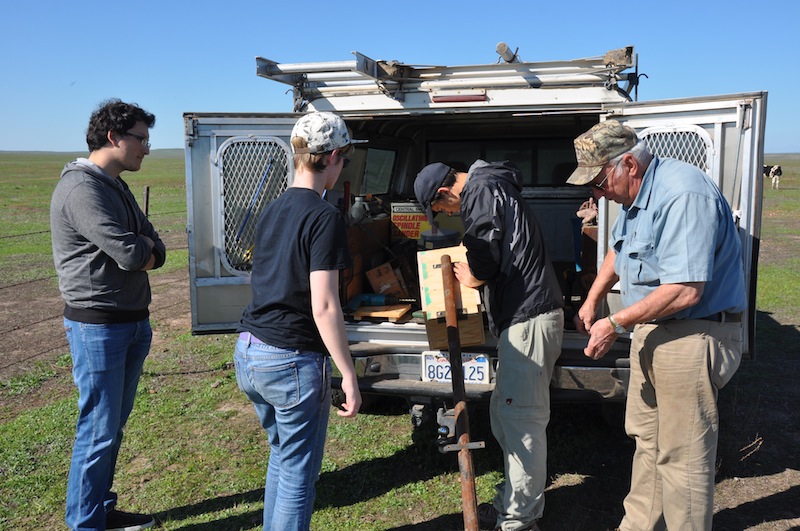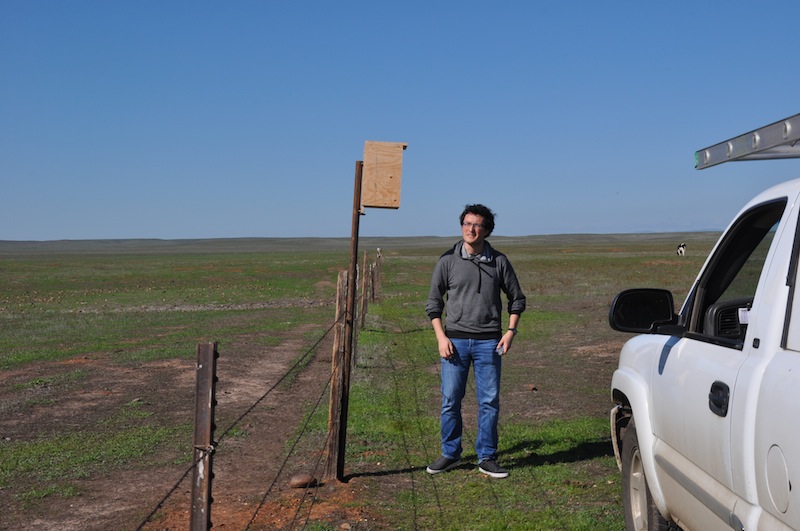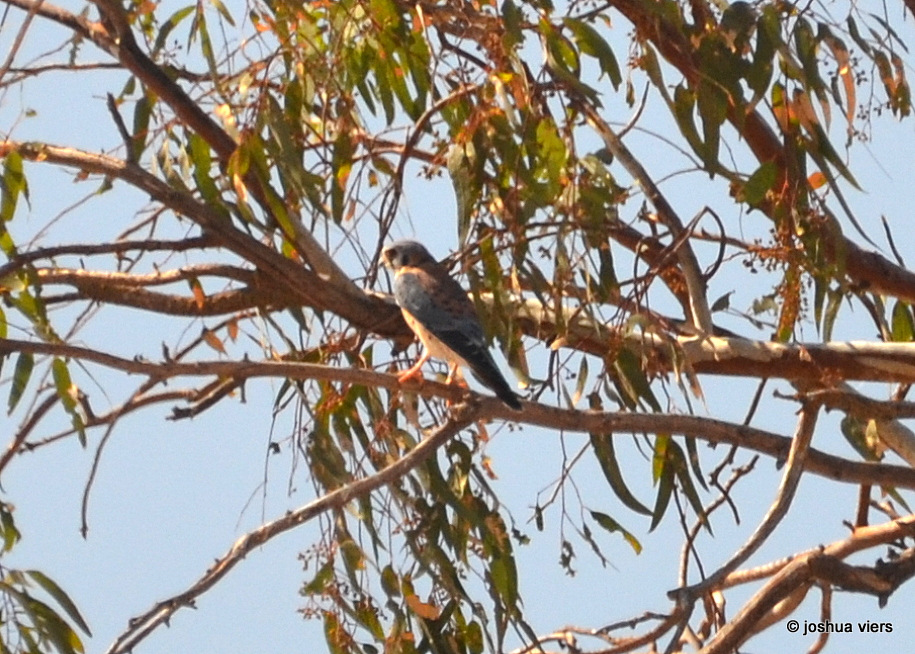 American Kestrels populations are declining in many areas across North America. Habitat loss, lack of prey, and lack of nest sites are all reasons cited for this decline. At UC Merced we're trying to help kestrels by erecting nesting boxes along fence rows in the Reserve. Kestrels are small relatives of the lightening fast Peregrine. But unlike all other North American falcons, the kestrel is a cavity nester. They take over an old woodpecker nest in a tree. However, suitable nest sites in living trees or dead are now at a premium. Agricultural and housing development have caused kestrel habitat to disappear.
American Kestrels populations are declining in many areas across North America. Habitat loss, lack of prey, and lack of nest sites are all reasons cited for this decline. At UC Merced we're trying to help kestrels by erecting nesting boxes along fence rows in the Reserve. Kestrels are small relatives of the lightening fast Peregrine. But unlike all other North American falcons, the kestrel is a cavity nester. They take over an old woodpecker nest in a tree. However, suitable nest sites in living trees or dead are now at a premium. Agricultural and housing development have caused kestrel habitat to disappear.
 Organizations across the country have embarked on a major conservation project to create new nesting habitat for these insect-eating raptors. Under the direction of expert Steve Simmons, 10 UC Merced students first spent a Saturday making the wooden boxes. Then, on the Reserve, they spent the afternoon attaching the boxes to old wooden fence posts. The boxes measure about 18 inches by 8 inches by 8 inches, and the opening is the perfect size for the kestrel. Each box receives several handfuls of wood shavings to provide a proper resting spot for the 4 or 5 eggs. The eggs are incubated by the male and female for about 30 days. Another 30 days or so and the young are ready to fledge.
Organizations across the country have embarked on a major conservation project to create new nesting habitat for these insect-eating raptors. Under the direction of expert Steve Simmons, 10 UC Merced students first spent a Saturday making the wooden boxes. Then, on the Reserve, they spent the afternoon attaching the boxes to old wooden fence posts. The boxes measure about 18 inches by 8 inches by 8 inches, and the opening is the perfect size for the kestrel. Each box receives several handfuls of wood shavings to provide a proper resting spot for the 4 or 5 eggs. The eggs are incubated by the male and female for about 30 days. Another 30 days or so and the young are ready to fledge.
We have placed 10 nest boxes in the Reserve. The very next day, kestrels were inspecting one box as a new potential nest site

 We owe a debt of gratitude to the UC students who volunteered for this project and a special thanks to Steve Simmons and Bill Ralph for overseeing the nest box construction, and to Billy Lopez of General Wood Products for donating the lumber. Student participants are Cecilia Valdovinos, Brandon Tran, Dmitri Medveko, Katharine Cook, Bryan Juarez, Abby Dziefiel, and Jordan Stratford. Next time you're near the new Student Services Building, look east and you may see some kestrels near one of our nest boxes.
We owe a debt of gratitude to the UC students who volunteered for this project and a special thanks to Steve Simmons and Bill Ralph for overseeing the nest box construction, and to Billy Lopez of General Wood Products for donating the lumber. Student participants are Cecilia Valdovinos, Brandon Tran, Dmitri Medveko, Katharine Cook, Bryan Juarez, Abby Dziefiel, and Jordan Stratford. Next time you're near the new Student Services Building, look east and you may see some kestrels near one of our nest boxes.


